

The addictiveness of devices and social media that now define much of daily life are all part of the grand design of persuasive technologies to control how we think and act. read more
One of the world’s most powerful superfoods is generally not recognized as such because of bad science, misconceptions, and prejudice. The food I’m talking about is fat, especially saturated fat. read more
Evidence keeps mounting on the potential dangers of stevia. read more
How good are ketone dietary supplements? Don’t fall for keto scams. read more
That issue covers brain fuel, the cause of Alzheimer’s, natural flavors, and lung cancer. If you missed it, you can link to it here

The addictiveness of devices and social media that now define much of daily life are all part of the grand design of persuasive technologies to control how we think and act.
“We called the police because she wrecked her room and hit her mom… all because we took her phone,” Kelly’s father explained. He said that when the police arrived that evening, Kelly was distraught and told an officer that she wanted to kill herself. So an ambulance was called, and the 15-year-old was strapped to a gurney, taken to a psychiatric hospital, and monitored for safety before being released.
“Days after being hospitalized, Kelly was brought to my office by her parents who wanted to get help for their troubled girl,” says Richard Freed, a child and adolescent psychologist.
Kelly’s parents explained to Freed that their daughter’s hospitalization was the culmination of a yearlong downward spiral spurred by her phone obsession. Kelly had been refusing to spend time with her family or focus on school. Instead, she favored living her life on social media. A previously happy girl and strong student, Kelly had grown angry, sullen, and was now bringing home report cards with sinking grades. Kelly’s parents had tried many times in prior months to set limits on their daughter’s phone use, but she had become increasingly defiant and deceitful, even sneaking on her phone at all hours of the night.
When Kelly’s latest report card revealed a number of failing grades, her parents felt compelled to act. They told Kelly early in the afternoon on the day the police were called that she would need to turn in her phone by 9 p.m. But when the time came, Kelly refused, and a pushing match ensued between her and her parents, concluding in the violent tantrum that led the girl to be hospitalized.
“I asked Kelly, who was sitting in a corner, to help me understand her perspective on that evening,” said Freed. “She didn’t respond and instead glared at her parents. But then, surprising everyone in the room, she cried, ‘They took my f***ing phone!’ Attempting to engage Kelly in conversation, I asked her what she liked about her phone and social media. She replied, ‘They make me happy.’”[1]
Freed’s psychology practice is filled with families like Kelly’s. Parents complain that their children’s excessive use of phones, video games, and social media is the most difficult parenting issue they face, and in many cases, is tearing their families apart.
“Preteen and teen girls refuse to get off their phones, even though it’s remarkably clear that the devices are making them miserable,” says Freed. “I also see far too many boys whose gaming obsessions lead them to forgo interest in school, extracurricular activities, and anything else productive. Some of these boys, as they reach their later teens, use their large bodies to terrorize parents who attempt to set gaming limits. A common thread running through many of these cases is parent guilt, as so many are certain they did something to put their kids on a destructive path.”
What these parents don’t understand is that their children’s and teens’ destructive obsession with technology is the designed consequence of a virtually unrecognized merger between the tech industry and psychology. This alliance pairs the consumer tech industry’s immense wealth with the most sophisticated psychological research, making it possible to develop social media, video games, and phones with drug-like power to seduce young users.
Parents have no idea that lurking behind their kids’ screens and phones are a multitude of psychologists, neuroscientists, and social science experts who use their knowledge of psychological vulnerabilities to devise products that capture kids’ attention for the sake of industry profit. What these parents and most of the world have yet to grasp is that psychology — a discipline that we associate with healing — is now being used as a weapon to exploit our children.
Incredible as it might seem, much of our current problem with high tech mind control stems from an institution of higher learning—Stanford University. The Persuasive Technology Lab at Stanford was founded in 1998. Its creator Dr. B.J. Fogg, is a psychologist and the father of persuasive technology, a discipline in which digital machines and apps — including smartphones, social media, and video games — are configured to alter human thoughts and behaviors. As the lab’s website boldly proclaims: “Machines designed to change humans.”[2]
Fogg speaks openly of the ability to use smartphones and other digital devices to change our ideas and actions: “We can now create machines that can change what people think and what people do, and the machines can do that autonomously.” Called “the millionaire maker,” Fogg has groomed former students who have used his methods to develop technologies that now consume kids’ lives. As he recently touted on his personal website, “My students often do groundbreaking projects, and they continue having impact in the real world after they leave Stanford… For example, Instagram has influenced the behavior of over 800 million people. The co-founder was a student of mine.”[3]

It is not just children and teens that are affected, adults can become addicted as well. Go to any restaurant and you will notice people sitting around their tables and instead of being engaged in conversation, they have their faces glued to their cell phones. Everywhere you go nowadays people are paying more attention to their cell phones than their family or friends. Cell phone addiction is a real and growing danger.
Like a lot of parents, Mike Harrison often sees his 13-year-old daughter lost in another world while on her smartphone, oblivious to everyone and everything around her. Instead of talking, texting has become a major form of communication with her friends, even though they may be sitting just a few feet apart. Harrison also worries that the ease of texting and posting on social media is turning kids into poor communicators who write things they’d never say in person or in a phone conversation—on the rare occasion when they use their devices to make a call.
Ramsay Brown co-found of Dopamine Labs, which uses artificial intelligence and neuroscience to help app writers attract and retain users says, “We have now developed a rigorous technology of the human mind, and that is both exciting and terrifying. We have the ability to twiddle some knobs in a machine learning dashboard we build, and around the world hundreds of thousands of people are going to quietly change their behavior in ways that, unbeknownst to them, feel second-nature but are really by design.” [4] Programmers call this “brain hacking,” as it compels users to spend more time on sites even though they mistakenly believe it’s strictly due to their own conscious choices.
Tech companies like Facebook, Google, and Apple use behavioral techniques and neuroscience to keep you compulsively glued to your phone and computer screens. These companies are in an eyeballs-seeking arms race with each other and will do whatever it takes to grab your attention and keep it.
Tristan Harris, a former Google employee, describes some of the techniques used to keep us glued to their website.
“After you finish watching a YouTube video,” Harris notes, “it auto-plays the next one right away, so you don’t have to make a conscious choice. Let’s say that creates a 5 percent lift in how much time people spend on YouTube. So, Facebook is sitting there watching their traffic get siphoned away, and Facebook says we have to make our videos auto-play, too.”
Facebook, has a huge incentive to keep you treading through its news feed so it can sell more ads. Harris says that’s one reason the company uses continuous scroll, so that new content will keep opening up as you hit the bottom of the page. But he thinks a more ethical design would be to enable what an individual user wants to do at any given moment.
“Let’s say your friend texts you that dinner’s off,” he says. “So there you are with no plans, and you open up Facebook. At that moment, Facebook has about 1,000 people whose job is to get you to just click and scroll and watch stuff on the news feed. And that will work. You’ll probably end up sitting there, an hour later, just kind of having scrolled through the news feed.”[4] At which point, says Harris, you will have fulfilled Facebook’s mission, but perhaps not your own.
The techniques used may seem harmless or commonplace, for example, Facebook’s birthday reminders aren’t just notifications, but are there to draw people back into the site to wish someone happy birthday.
Facebook and Instagram tailor the timing of the “notifications” they deliver to users—the messages you get that are indicated by a number in red at the top right of the screen—in order to deliver shots of dopamine to users at times determined by an algorithm.
Sometimes there’s nothing waiting for you, sometimes there’s a friend request or someone wrote on your wall. At times, there’s just some kind of filler notice. It’s not pertinent to your life, but Facebook’s algorithms have figured out that showing it to you then is going to be slightly more surprising than not showing it to you at all or showing it to you later. These patterns will keep you coming back.
Larry Rosen, a professor of psychology at California State University, Dominguez Hills, who researches the psychology of tech, said people typically check their phones every 15 minutes or less. They're not just craving dopamine; he said they’re seeking relief from the stress hormone cortisol.
“Half of the time, they check their phone, there’s no alert, no notification,” said Rosen. “It’s coming from inside their head, telling them, ‘Gee I haven’t checked on Facebook for a while, I haven’t checked on this Twitter feed for a while. I wonder if someone commented on my Instagram post. That then generates cortisol and it starts to make you anxious. Eventually your goal is to get rid of that anxiety, so you check in.”
This amount of anxiety is going to have consequences. A recent study found that teenagers are increasingly depressed, feel hopeless, and are more likely to consider suicide. The study found a sudden increase in teens’ symptoms of depression, suicide risk factors, and suicide rates starting in 2012—around the time when smartphones became popular, says Jean Twenge, one of the authors of the study.
The researchers found that teens who spend five or more hours per day on their devices are 71 percent more likely to have one risk factor for suicide. And that’s regardless of the content consumed. Whether teens are watching cat videos or looking at something more intense, the amount of screen time—not the specific content—goes hand in hand with the higher instances of depression.
“It’s an excessive amount of time spent on the device. So half an hour, an hour a day, that seemed to be the sweet spot for teen mental health in terms of electronic devices,” Twenge says. “At 2 hours a day there was only a slight elevated risk. And then 3 hours a day and beyond is where you saw the more pronounced increase in those who had at least one suicide risk factor.”[5] The persuasive technologies used by tech companies, however, are designed to hook kids and keep them on their devices for as long as possible. It is no wonder why suicide and psychological disorders in kids have been increasing in recent years.
The creation of digital devices with drug-like effects are pulling people away from engaging in real-life activities and developing social skills and relationships. Because the adolescent brain is more easily controlled than the adult mind, the use of persuasive design is having a much more hurtful impact on kids.
Persuasive technologies are reshaping childhood, luring kids away from family and schoolwork to spend more and more of their lives sitting before screens and phones. According to a report from the Kaiser Family Foundation, preteen U.S. children now spend 5½ hours each day with entertainment technologies, including video games, social media, and online videos.[6] The average teenager spends an incredible 8 hours each day playing with screens and phones. Productive uses of technology — where persuasive design is much less a factor — are almost an afterthought, as U.S. kids only spend 16 minutes each day using the computer at home for school.
Quietly, using screens and phones for entertainment has become the dominant activity of childhood. Younger kids spend more time engaging with entertainment screens than they do in school, and teens spend even more time playing with screens and phones than they do sleeping. The result is apparent in restaurants, the car sitting next to you at the stoplight, and even many classrooms: Attesting to the success of persuasive technology, kids are so taken with their phones and other devices that they have turned their backs to the world around them. Hiding in bedrooms on devices, or consumed by their phones in the presence of family, many children are missing out on real-life engagement with family and school — the two cornerstones of childhood that lead them to grow up happy and successful.[7] Even during the few moments kids have away from their devices, they are often preoccupied with one thought: getting back on them.
Designing programs that cause addiction brings up moral questions about the impact of using persuasive techniques on children and teens. For example, should the fear of social rejection be used to compel kids to compulsively use social media? Is it okay to lure kids away from school tasks that demand a strong mental effort so they can spend their lives on social networks or playing video games that don’t make them think much at all? Is it okay to incessantly trigger kids to use revenue-producing digital products at the expense of engaging with family and other important real-life activities? And is it okay to subject kids to conditions that can cause depression and encourage suicidal behavior? The ultimate goal of persuasive techniques is to generate revenue and that’s it, even if it comes at the cost of somebody’s mental health and even their life.
With each passing day, new and more influential persuasive technologies are being deployed to better take advantage of children’s and teens’ inherent needs and desires. Adults are not immune, they too, are also manipulated. Until there are regulations and standards set to limit this practice, our best defense right now is becoming aware of the problem and inform others. Knowing what causes cell phone and social media addition, can go a long way in gaining back control of our lives and the lives of our children.
Twenge suggests that a good rule of thumb for both teens and adults, is to limit your daily device use at 2 hours or less. Then you put the phone down, and you spend the rest of your time on things that are better for mental health and happiness like sleeping, seeing friends, and family face to face, and getting out and exercising. These are all things that are linked to better mental health. So, if you use the phone to facilitate those things rather than stand in their way, that’s a good way to go.
Giving smartphones to preteens is not healthy. It is best to wait until at least age 15 before they get their first smartphone. After they enter high school is a reasonable age to aim for because links between social media use and poor grades, unhappiness, antisocial behavior, depression, and suicide, are the strongest for younger teens than for 11th and 12th graders. As they mature they are better able to handle the demands of social media.
References
1. https://medium.com/@richardnfreed/the-tech-industrys-psychological-war-on-kids-c452870464ce
2. http://captology.stanford.edu/
3. https://vimeo.com/117427520
4. Brooks, J. Tech insiders call out Facebook for literally manipulating your brain. KQED Science, May 25, 2017.
5. Garcia-Navarro, L. The risk of teen depression and suicide is linked to smartphone use, study says. NPR, December 17, 2017.
6. https://kaiserfamilyfoundation.files.wordpress.com/2013/04/8010.pdf
7. https://www.ncbi.nlm.nih.gov/books/NBK32769/

We hear a lot about superfoods these days. Although there is no official definition, superfoods are generally recognized as foods or food components that provide extraordinary health benefits. These benefits could be the result of its high vitamin, mineral or antioxidant content or other compounds with special health or healing properties.
One of the world’s most powerful superfoods is generally not recognized as such because of bad science, misconceptions, and prejudice. The food I’m talking about is fat, especially saturated fat. Most people are surprised to hear me call fat a superfood because it has been demonized for the past 60 years as the primary cause of obesity and heart disease. However, fat is an essential nutrient that performs many vital functions in the body. The lack of an adequate amount of fat in the diet can lead to poor health and increase your susceptibility to chronic disease.
For decades we’ve been avoiding fat like the plague, eating low-fat this, non-fat that, choosing egg whites over the yokes, and trimming off every morsel of fat from meat in order to comply with the generally accepted recommendation to reduce our fat intake.
As a whole, we have succeeded in reducing our total fat intake and replacing it with more so-called healthy carbohydrates—most notably refined grains and sugar. What has been the consequence? Obesity is at an all-time high, diabetes and metabolic disorders have increased to epidemic proportions. Heart disease is still our number one killer. We have dutifully followed the advice of the “experts” and as a result, we have become fatter and sicker than ever before.
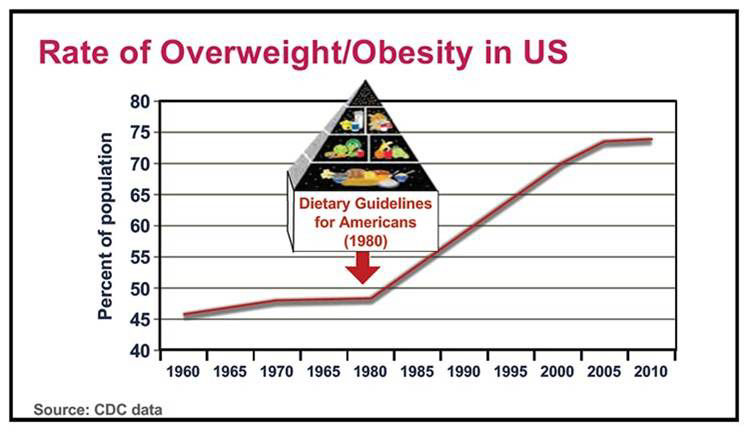
In 1980 the US government published the first edition of the Dietary Guidelines for Americans which specified that we limit total fat intake to no more than 30 percent of daily calories and limit saturated fat to less than 10 percent of calories. These Guidelines established the low-fat diet as the standard approach for weight loss and to prevent heart disease, diabetes, and other chronic diseases. However, since the publication of the Guidelines, overweight and obesity have skyrocketed to their highest levels in history; diabetes, Alzheimer’s, COPD, and other chronic diseases have risen to epidemic proportions. It has become obvious that the low-fat diet was a miserable failure.
What went wrong? Replacing fat with refined carbohydrates was the worse dietary blunder of the 20th century and has led to the skyrocketing levels of chronic disease we are experiencing today.
Throughout history fat has been highly prized. Our ancient ancestors knew the value of eating an adequate amount of fat and ate every bit of fat on the game they caught and even took the effort to crack open the bones to access the fatty bone morrow. Pregnant and nursing women were given extra portions of fat to assure good health for both the mother and newborn child.
Fat supplied between 50-90 percent of the calories of our hunter-gatherer ancestors. Humans have been eating fat for many thousands of years and the human body is well adapted to metabolizing fat. How then, did a traditional superfood suddenly become a dietary villain?
You can give credit for that to the sugar industry. In the 1950s the sugar industry devised an elaborate plan to influence medical research, government agencies, and public opinion. At that time, sugar was generally believed, and rightly so, to cause obesity, dental decay, and diabetes and emerging research suggested it was the primary cause behind the increasing incidence of heart disease. This troubled the sugar industry, so they developed a “propaganda campaign,” as they themselves called it, to divert negative attention away from themselves and place it on fat. That campaign proved highly successful.
The replacement of fat in the diet with refined carbohydrates over the past 40 years has led to our dramatic decline in health. The solution is simple, reduce carbohydrate consumption (primarily sugar and refined grains) and add more good fats into the diet. Fat is an essential nutrient and provides many health benefits that can literally reverse nearly all of the chronic, degenerative diseases that currently plague our modern society.
In my new book, Fat Heals, Sugar Kills, I reveal how the sugar industry influenced science and public opinion, transforming a traditional superfood into a dietary monster. You will also learn why fats are some of our most powerful health foods and how to use them to reverse chronic disease and achieve better health.
Did you know that fat can…
• help stabilize blood sugar and insulin levels,
• help balance hormone levels,
• help protect against infectious illnesses,
• establish a healthy gut microbiome,
• improve digestive function and calm inflammation,
• provide more nutrition than a multivitamin supplement,
• help you lose excess body fat, including abdominal fat,
• protect against heart disease, diabetes, and Alzheimer’s,
• help regulate blood pressure, cell growth, immune function, mucus secretion, sympathetic nervous system activity, and much more.
My new book describes the link between sugar consumption and common health issues such as obesity, heart disease, diabetes, and Alzheimer's. It explains the problems with the standard low-fat diet and how it has contributed to these problems. It offers a solution through a low-carb, high-fat diet and explains why fats are not only essential to good health but are some of our most powerful superfoods. Everything in the book is documented with references to the latest studies in dietary research.
If you want to understand why you should not fear eating fat and why you should limit your carbohydrate intake, this book will explain it all.
Book featured in this article:
Fat Heals, Sugar Kills
The Cause of and Cure for Cardiovascular Disease, Diabetes, Obesity, and Other Metabolic Disorders
by Dr. Bruce Fife
Available from Piccadilly Books, Ltd.
For a description or to order click here
Top of Page
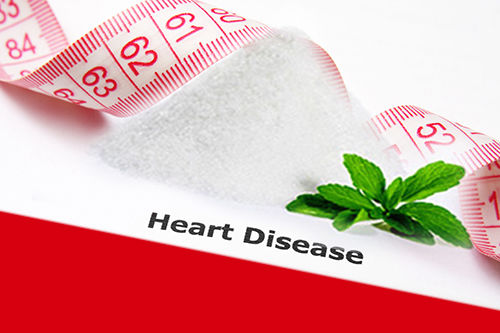
Stevia is promoted as a harmless herbal sweetener that can be used as a healthy replacement for sugar. Since the FDA approval of purified stevia extract as a sweetener and food ingredient in 2008, stevia has found its way into hundreds of food products, medications, and dietary supplements. Many people use stevia as a sweetener in place of sugar and other sweeteners. Others may consume it without realizing it as an ingredient in commercial products. In recent years, stevia’s healthy image has taken a hit as health concerns have surfaced. Doctors and nutritionists are seeing health problems disappear when they instruct patients to discontinue their use of stevia. One such doctor is Joseph Nelson, MD. He began investigating stevia after he began using it and discovered it raised his PSA levels—a marker for prostate cancer. When he discontinued using stevia his PSA levels dropped back to normal.
He began instructing all of his patients with elevated PSA to eliminate stevia. Some claimed they didn’t use the product, but on examination it was found that stevia was an ingredient in their foods or supplements. Once these products were discontinued, PSA levels immediately improved. He found that stevia was also linked to unexplained cases of vertigo, arrhythmias, IBS, and urinary frequency. Removing patients from stevia was all that was needed to see dramatic improvement. Recently, he discovered stevia may also increase the risk of heart disease.
When your doctor orders blood tests one of the markers that may be measured is a hormone called brain natriuretic peptide or BNP. Although the name of this hormone suggests that is associated with the brain, it is not, the name came about because it was originally identified in extracts of pig brain. BNP is secreted by the heart in response to stress and is used as a marker to evaluate risk of heart failure and, to a lesser extent, kidney disease. It is an especially reliable predictor of cardiovascular mortality in diabetics.
Heart failure doesn’t necessarily mean the heart has stopped working, it means it is not working properly so it doesn’t fully support the body’s need for blood and oxygen. Heart failure is serious and is one of the most common reasons for hospitalization of people over the age of 65. Over time, it can get worse and lead to death. Anything that can damage the heat can lead to heart failure including coronary artery disease, heart attack, cardiomyopathy, high blood pressure, and diabetes.
When you have heart failure your heart produces two related hormones: one called B-type natriuretic peptide (BNP) and the other N-terminal-pro-BNP (NT-proBNP). Levels of both hormones increase when heart failure gets worse and decrease when it gets better. A BNP blood test measures these two hormones. NT-proBNP in the range of 125-450 pg/mL is considered normal or mild to moderate stress; a reading above 450 pg/mL is an indication of heart failure or severe stress—not a good sign. Risk of cardiac arrest and death increases with increasing BNP levels.
Dr. Nelson discovered that stevia can have a direct affect on the heart by influencing BNP levels. This was first revealed to him by a patient whose blood test showed a NT-proBNP level of 628 pg/mL—an indication of heart failure. Over the next 6 months the patient pursued the standard drug treatment for heart failure. On the follow-up visit the patient’s NT-proBNP level had risen to 699 pg/mL, showing that her condition was getting worse. This suggested that she was doing something that was continuing to harm her heart despite the medication. On investigation it was discovered that she was using a sweetened energy drink daily that contained stevia. She was instructed to stop using the product. Two months later she had another blood test. This time her NT-proBNP level had dropped to 375 mg/mL—down into the normal range. This change occurred by simply discontinuing stevia, nothing else in her diet or lifestyle had changed.
This is significant because it suggests that stevia may be harmful to the heart. If you have had heart issues or are concerned about the health of your heart, it may be wise to avoid stevia and products containing it.
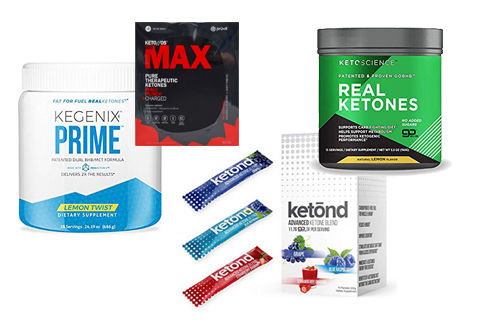
THE KETONE CRAZE
In recent years the ketogenic diet has become the latest diet trend. In contrast to the conventional low-fat, high-carb diet, the ketogenic diet is just the opposite—very low-carb and high-fat. The research has been highly impressive with more favorable results with weight loss and improved health markers than the standard low-fat dietary approach.
The secret behind the ketogenic diet is that it shifts the body from burning sugar (glucose) to burning fat as its primary source of fuel. Excess body fat is burned off, promoting weight loss. Fat is a far more efficient fuel than glucose and triggers metabolic changes that improve overall health. The key feature of the diet is the production of ketones—primarily beta-hydroxybutyrate or BHB—an alternative form of fuel produced by the liver from fatty acids. When your body begins to use ketones as a major source of fuel, you are in what is referred to as nutritional ketosis.
The ketogenic diet provides many health benefits including weight loss, increased energy levels, improved mental function, better blood sugar control, improved cardiovascular health, and protection from cancer, to name a few.
Many of the benefits come from reducing the amount of carbohydrate consumed and many come from the body’s use of ketones as a source of fuel. In fact, studies have shown that ketones themselves can produce many desirable effects including:
• Appetite suppression and weight loss
• Improved cognition/memory
• Increased energy
• Better mood
• Increased endurance and athletic performance
• Reduced inflammation
• Better sleep
Traditionally, the only way you could increase blood ketone levels was by going on a ketogenic diet, fasting, or by consuming a source of medium chain fatty acids, such as coconut or MCT oil. In recent years, ketone dietary supplements have entered the market. These are not MCTs but ketone salts that directly raise blood ketone levels. Ketone salts are made of beta-hydroxybutyrate that are combined with potassium, calcium, sodium, or magnesium to improve absorption. This is the type of ketone supplement currently used in all commercial dietary supplements. Researchers use another form, called ketone esters, in which beta-hydroxybutyrate is linked to an alcohol, but they are very expensive and currently only used in research. These products are referred to as exogenous ketones because they originate from a source outside the body. This is in contrast to endogenous ketones, which are produced in the body by the liver.
The advantage of supplemental ketones is that they provide an almost instant source of ketones without the need of changing the diet or consuming large quantities of MCT oil or coconut oil. Like endogenous ketones, exogenous ketones provide you with all the same health benefits that ketones have to offer. For many people it is far easier to stir a spoonful of ketones into a glass of water or juice and drink it, than it is to make dramatic changes to the diet or take several spoonfuls of MCT oil. Another benefit is that it doesn’t upset the stomach like large amounts of MCT oil or coconut oil can; although depending on the added ingredients (MCTs), some brands can cause stomach upset. With exogenous ketones you can raise blood ketones to therapeutic levels with one dose mixed with a little water. Exogenous ketone supplements will raise blood ketones for about 2 to 3 hours and can be taken up to three times a day.
There are also some disadvantages to exogenous ketones. The most prominent perhaps is the taste. They taste terrible. Some brands add flavorings and sweeteners to their products to make them more palatable. Sometimes people forget that these are dietary supplements, not shakes or beverages, and they aren’t supposed to taste like candy.
Another issue is the price. The process of making ketone salts is expensive and for this reason, exogenous ketones supplements are pricy. You will pay $40 to $60 for one container that may provide 16 to 20 servings. Expect to pay anywhere from $2 to $4 per serving. The more expensive brands cost as much as $6.50 per serving. Companies often recommend two servings at day. This means 60 servings per month for a total of $390 monthly. That’s a lot to pay for a supplement.
Because of the growing popularity of the ketogenic diet, there has been an explosion of interest in ketone supplements. The ketogenic diet requires a definite change in eating patterns and some degree of effort to maintain. Taking a dietary supplement to achieve much of the same benefits, without changing the diet, is appealing to many people. For this reason, a multitude of ketogenic supplements of all types have burst onto the market—some of them useful and others a complete waste of money. Because of the many choices, it can be difficult to tell the difference between them. Many claim to be the best on the market or the most effective, and often make wild claims or insist that their product is the number one choice to burn fat and lose weight or boost brain power, or whatever. With so many products on the market, it can be confusing for consumers.
The words keto, ketone, and ketogenic are thrown around loosely by supplement manufacturers. Many companies use these terms as brand names or to describe certain products that are essentially just vitamin and mineral supplements, and nothing more. They do this to cash in on the keto craze, hoping customers will purchase their products thinking they will enhance ketogenesis. Many of these “keto” supplements contain only MCTs and are way overpriced. True ketogenic supplements contain exogenous ketones in the form of beta-hydroxybutyrate (BHB). If the product does not contain BHB, it is not an exogenous supplement and will not increase blood ketones (unless it contains MCTs). BHB, however, can raise blood ketones much higher than MCTs can.
Because terms like “keto” and “ketone” can be used indiscriminately on any product, determining which truly supply exogenous ketone can cause confusion. Here are the things you need to look for when purchasing a useful exogenous ketone supplement.
INGREDIENTS
The first thing you need to do is look at the list of ingredients. The following are some of the ingredients you may find in these supplements.
BHB
The primary ingredient in any exogenous ketone supplement is beta-hydroxybutyrate (BHB). If it doesn’t have this ingredient it is not an exogenous ketone supplement. BHB must be in the form of a ketone salt and therefore must be bound to sodium, magnesium, calcium, or potassium. Generally, the product will contain BHB in 3 or 4 of these forms.
Ketone salts are the only ingredients the supplement needs to be effective. However, many brands add various other ingredients. If the product is in powder form it will generally also contain silicon dioxide and calcium silicate as anti-caking agents and to add bulk. If it is in a liquid form it doesn’t need these ingredients, but may contain citric acid and/or sodium hydroxide as a preservative and to maintain pH.
MCT Oil
The most common additional ingredient is MCT oil. This oil is added because it is naturally ketogenic, meaning it can be converted directly into the BHB by the liver. It is added to boost the ketogenic effect of the supplement without using additional BHB, which is much more expensive. MCT oil is added primarily to reduce the costs of producing the supplement. Adding MCT oil effectively dilutes the supplement making it less effective, but much cheaper to produce. If you pay $3 to $6 per serving, for a product containing MCT oil or powder, you are paying a premium price for MCTs that you can get for a fraction of the price elsewhere. There is no reason to add MCTs except to dilute the formula and cut manufacturing costs.

Sweeteners and Flavorings
Because the taste of BHB is so bad, many brands add sweeteners and flavorings to mask the taste. Common sweeteners include erythritol, stevia, and rebaudioside A (another name for stevia extract). The primary problem with using sweeteners is that they are all anti-ketogenic, even more so than refined sugar. Noncaloric sugar substitutes interfere with the natural production of ketones in the liver. The ketone salts from the supplement will still boost blood ketone levels, but sweeteners will actually hamper ketone production in the liver. If you are taking a ketone supplement as an aid to a ketogenic diet, the supplement will slow down your own body’s ketone production.
Caffeine and Malic Acid
Ketone supplements are supposed to give a boost of energy and are often used by athletes for this purpose. Some brands add caffeine, so the boost of energy they feel may actually come from the caffeine. A single dose of a ketone supplement may contain the same amount of caffeine as 2 cups of coffee. Other products contain malic acid, which is known for its ability to increase energy and tolerance to exercise. When you use ketone supplements containing ingredients like this, how do you know if the effects are from ketones or one of these other (less expensive) ingredients?
Proprietary Blend
Another common additive is the manufacturer’s secret recipe, also known as their “Proprietary blend.” This could include anything—aspartame or other sweeteners, MCT powder, caffeine, maltodextrin, etc. Because it is a proprietary blend they don’t have to disclose the ingredients. These blends are often kept secret so there is no way of telling how much BHB they contain or how much MCT powder might be present. For all we know, a product might consist of all MCT powder with no actual BHB. If a product does not specifically list BHB and the quantity it contains, it is safe to assume it contains little or none. Since anything could be included in the proprietary blend, it is best to pass on any ketone supplement that lists a proprietary blend without specifying exactly what is in the blend or how much BHB it contains.
Miscellaneous Ingredients
A multitude of binders, fillers, preservatives, and other ingredients may be included. Some ingredients you might see are L-taurine, fermented L-leucine, natural flavor, artificial flavor, xanthan gum, citric acid, Bioperine, beta-carotene, and guar gum, potassium sorbate, sodium benzoate, and various vitamins and minerals. Adding vitamins, minerals, and herbs may be nice, but have no beneficial effect on boosting ketone levels.
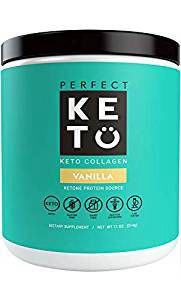
Misleading Labels
Some brands contain absolutely no BHB at all. They may include the word “Keto” on the label. It may be a part of the product name, such as Keto Collagen or 7-Keto Gold, but may not state anywhere on the package that it is a ketone supplement, only inferring such by the name of the product. People not knowing much about ketone supplements may purchase these products thinking they are less expensive exogenous ketone supplements. They are actually just expensive vitamin and mineral supplements and nothing more.
Many others will promote their products as being ketone supplements, but contain only MCT powder or oil and no BHB. Many powdered protein and collagen drinks masquerade as ketone supplements.
THE KETONE TEST
The highest quality ketone supplements contain only BHB as the active ingredient with as few additional ingredients as possible. The addition of all other ingredients dilutes the product and in some cases contaminates it.
Normally, we always have some level of ketones in our blood (0.1 mmol/l or less). The therapeutic effects of ketosis kick in when blood levels reach a minimum of about 0.5 mmol/l. This is a level that can be reached by simply consuming a source of MCTs or by a 24-36 hour water fast. An overnight fast (about 8-10 hours) will raise ketone levels to about 0.2 mmol/l. Studies using ketone esters (ketones bound to alcohol) typically raise blood ketones to the 1 to 2 mmol/l level. This is the range at which most of the benefits of ketones have been documented in medical research using exogenous ketone supplementation.
An interesting informal study was conducted by the staff of the Diet Doctor website, under the supervision of Andrreas Eenfeldt, MD. They tested four popular ketone supplements on four volunteers using a blood monitor. Each subject tested each supplement on different days separated by a two-day washout period; the results were compared to a placebo (artificially flavored drink with no ketone producing properties). Blood ketones were measured 60 minutes after taking the supplements.
Brands often sell several products with various flavorings and sweeteners added. The products tested in this study included:
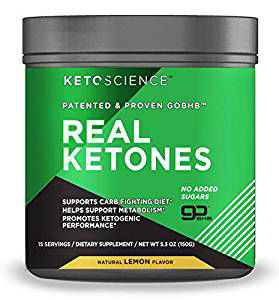
Brand: Real Ketones
Product: Kegenix prime, orange blast flavor
Amount of BHB: Unknown, proprietary blend
Price per serving: $2.00
Other ingredients: MCT powder, citric acid, natural flavors, silica, guar gum, rebaudioside A, and beta carotene (color)
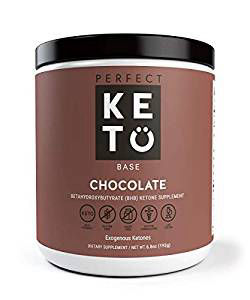
Brand: Perfect Keto
Product: Base exogenous ketones, chocolate sea salt flavor
Amount of BHB: 11.38 g
Price per serving: $3.93
Other ingredients: MCT oil powder, acacia fiber, cocoa powder, natural flavor, stevia leaf extract, monk fruit extract
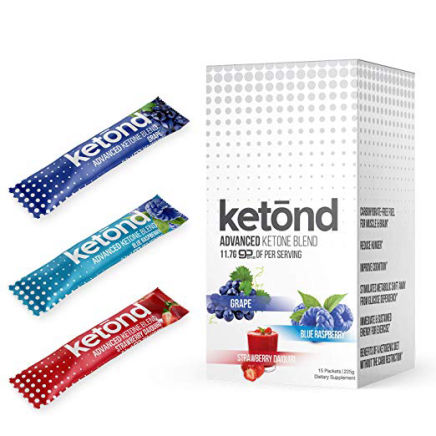
Brand: Ketond
Produce: Advanced ketone blend, grape flavor
Amount of BHB: 11.7 g
Price per serving: $2.67
Other ingredients: Citric acid, natural and artificial flavors, beetroot extract, stevia, malic acid, riboflavin (color)
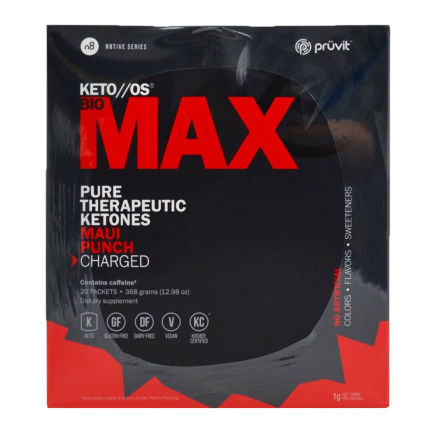
Brand: Pruvit
Product: Keto-OS Max, maui punch flavor
Amount of BHB: Unknown, proprietary blend
Price per serving: $6.50
Other ingredients: Erythritol, L-taurine, fermented L-leucine, malic acid, natural flavor, stevia, xantham gum, citric acid
Results
Brand Change in blood ketones (mmol/l)
Placebo -0.05
Real Ketones -0.03
Perfect Keto +0.23
Ketond +0.48
Pruvit +0.63
After 1 hour the average blood ketone level in the four subjects after taking the placebo decreased by 0.05 mmol/l below starting level. Interestingly, Real Ketones also had a decrease in ketones by 0.03 mmol/l, indicating that some supplements may actually decrease your ketone levels rather than raise them. The amount of BHB in this brand is unknown since this figure is included in its secret proprietary blend. It may or may not have any BHB and may be relying on its MCT content for its proposed ketogenic effect. The decrease in blood ketones from this product is probably due to some other ingredient, mostly likely rebaudioside A (stevia extract) which is known to interfere with ketone metabolism.
Perfect Keto and Ketond brands raised blood ketones only 0.23 and 0.48 mmol/l respectively, about the same amount you would expect from taking an MCT supplement. Both claim to contain over 11 grams of BHB per serving and Perfect Keto even has the addition of MCT powder. Again, perhaps another ingredient is interfering with ketone metabolism. Both contain stevia.
Pruvit gave the best results with an increase ketone above base level of 0.63 mmol/l. Even so, this is not much more than you could expect with MCTs alone. Their proprietary blend does not disclose how much BHB is in the product or if it relies primarily on MCTs for its effect. It was by far the most expensive of the group, at $6.50 per serving.
Using a urine ketone test strip, the last three products would give a reading that would range from trace to small. If you are going to use a ketone supplement, you want a product that will raise ketones enough to register at least small to moderate after 30 to 60 minutes.
RECOMMENDATIONS
The experiment above evaluated two brands that contained 11 grams of BHB but had only a modest effect on blood ketones, suggesting that you want a product with no less than 11 grams of BHB per serving.
Products that state a proprietary blend without specifying the amount of BHB are suspect. There is no way to tell how much BHB and how much MCTs are used. You would have to test them yourself and see how effective they are. Interestingly, both of the above brands with proprietary blends and unknown BHB content, are sold through multi level marketing.
Sweeteners may interfere with ketone metabolism, so you want to avoid these if possible. Adding sweeteners and flavorings help mask the taste. However, if these ingredients reduce the efficiency of the product, it is counterproductive and a waste of money. It would be much better to combine an unsweetened, unflavored product with a small amount of naturally sweetened orange juice or some other juice. The tiny amount of sugar in a half cup of juice will have far less impact than any sugar substitute.[2]
The best products will contain BHB and little else. Any additional ingredients, including MCTs, dilute the product and in some cases may even interfere with ketone metabolism.
Whatever product you choose, you should evaluate using the urine test strips (or blood monitor if you have one). That is really the only way you can tell if it is effective or not and if it is worth the price.
There are many dozens of products claiming to be keto supplements. Most don’t contain any BHB, so you have to check the ingredients. Many contain only small, ineffective amounts. Ketone salts are expensive, so expect to pay at least $50 per container, or about $2 to $5 per serving.
Two products that I have used, tested, and recommend are:
Brand: Nutricost
Product: Ketone Salts, unflavored
Form: Powder
Amount of BHB: 13 g
Price per serving: $1.67
Other ingredients: silicon dioxide and calcium silicate
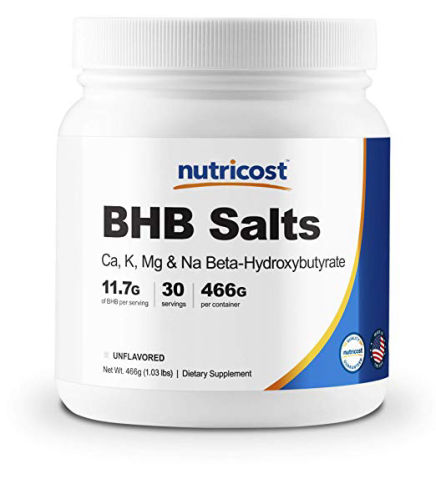
Brand: KetoSports
Product: KetoForce
Form: Liquid
Amount of BHB: 11.7 g
Price per serving: $3.44
Other ingredients: citric acid and/or sodium hydroxide
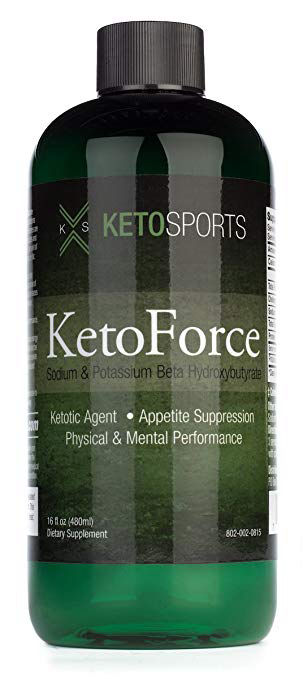
Both of these products are unflavored and unsweetened. I generally combine one serving in a half cup (4 oz) of water, drink it quickly, and follow with another 8 ounces of water. Yes, the taste is bad, but not unbearable when you chug it down quickly like this. You could add a little lemon juice or citric acid to help mask the taste. You could also, mix a serving in a half cup of juice. Follow with glass of water.
The above products are ones that I have personally used and trust. There may be other brands that are equally as good. You just need to do a little searching. While I was investigating different brands I came across several websites that claim to list the top 10 keto products or warned about falling for keto scams. In each case, the sites were pushing and selling a certain brand and were not fair evaluations. So, be careful about websites that appear to be impartial judges.
Some sites will list reviews from customers, which can be helpful. Many people base their reviews of ketone products primarily on taste. A good tasting product does not necessarily mean an effective product. In fact, the most pleasant tasting products are likely going to be the least effective.
Also, keep in mind that many people are told by the manufacturers to test the supplements first thing in the morning. This can give a false positive reading, so you have to be careful about reviews where people claim the supplement raised ketone levels. The best way to evaluate a supplement is to test it yourself.
References
1. Fife, B. Ketone Therapy: The Ketogenic Cleanse and Anti-Aging Diet. Piccadilly Books, Ltd.: Colorado Springs, CO; 2017.
2. Fife, B. The Stevia Deception: The Hidden Dangers of Low-Calorie Sweeteners. Piccadilly Books, Ltd.: Colorado Springs, CO; 2017.
That issue covers brain fuel, the cause of Alzheimer’s, natural flavors, and lung cancer. If you missed it, you can link to it here